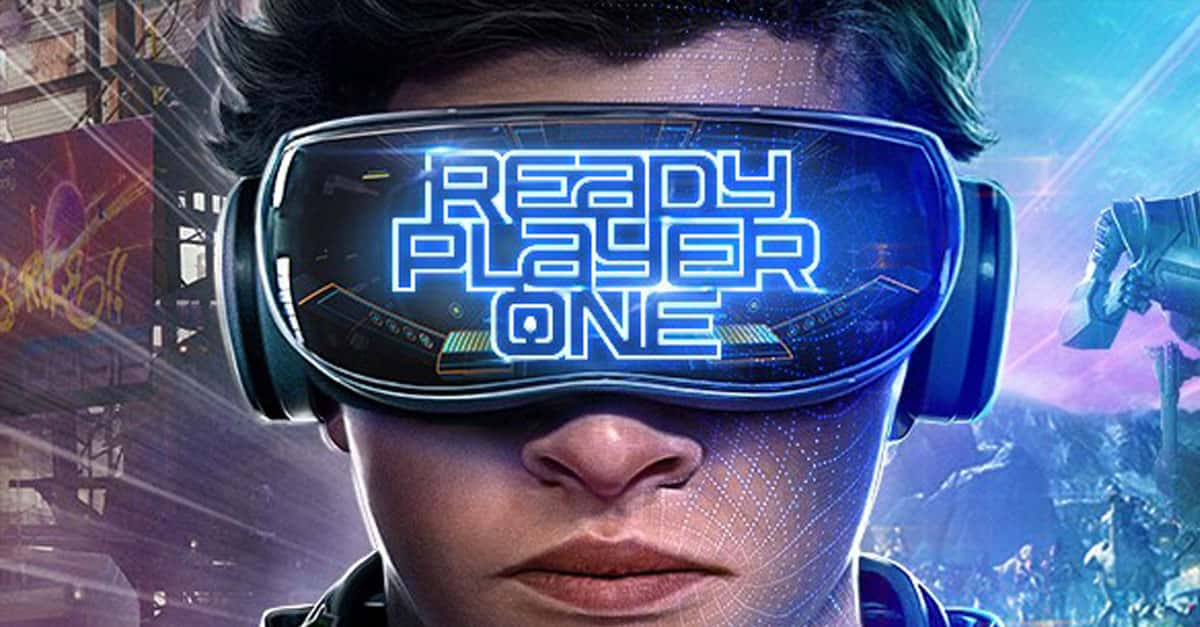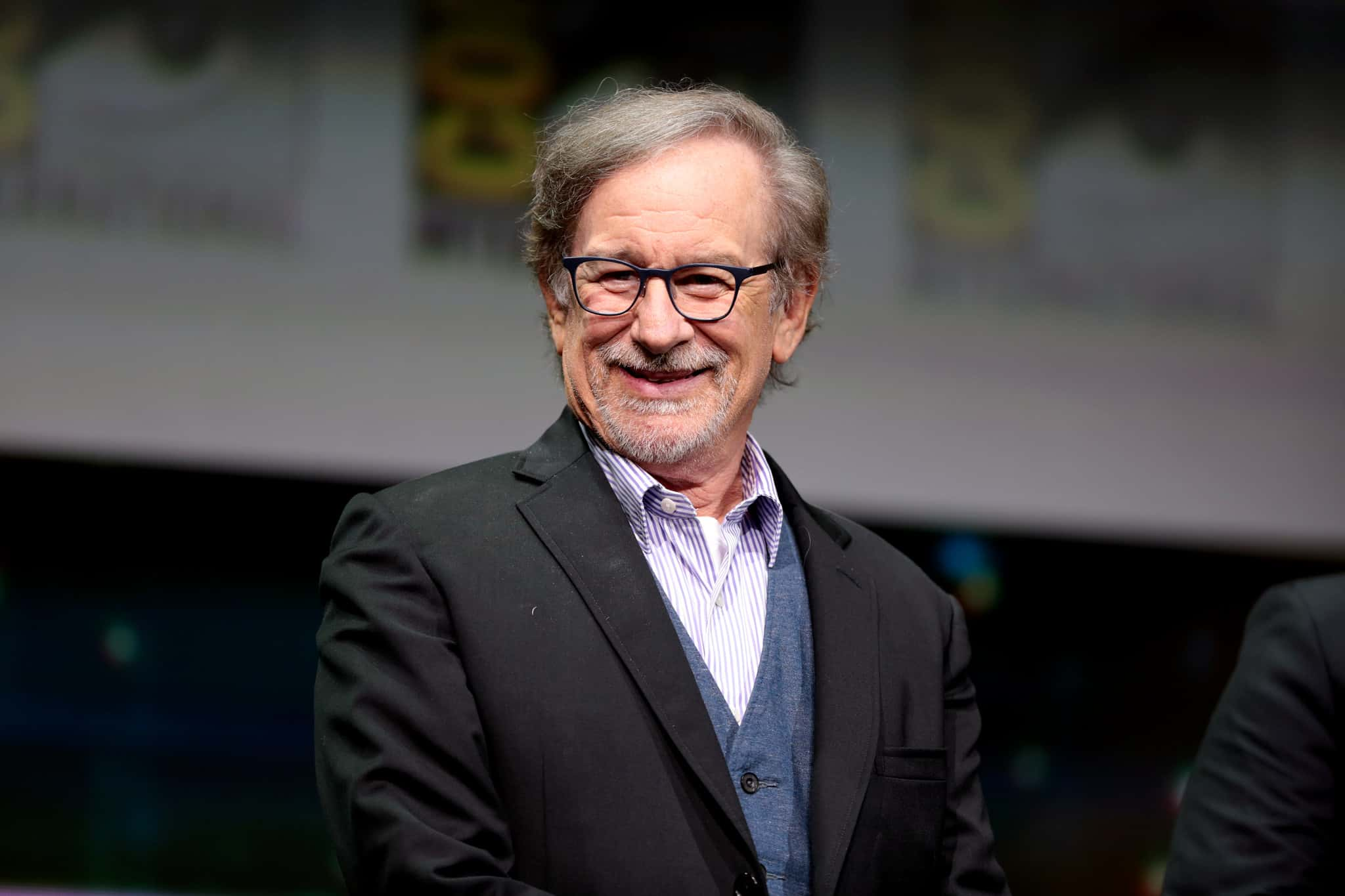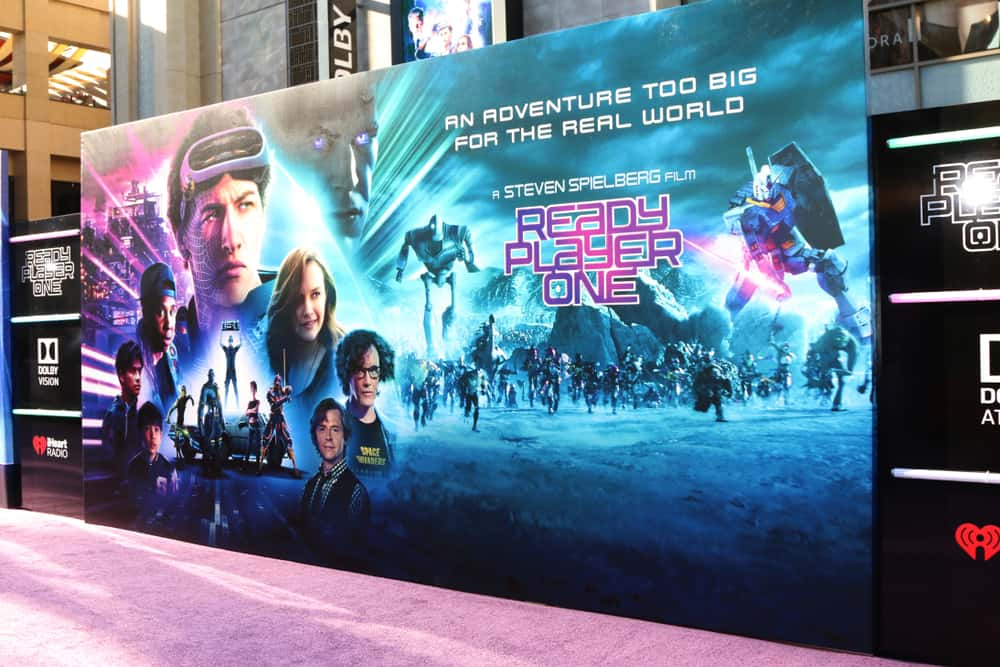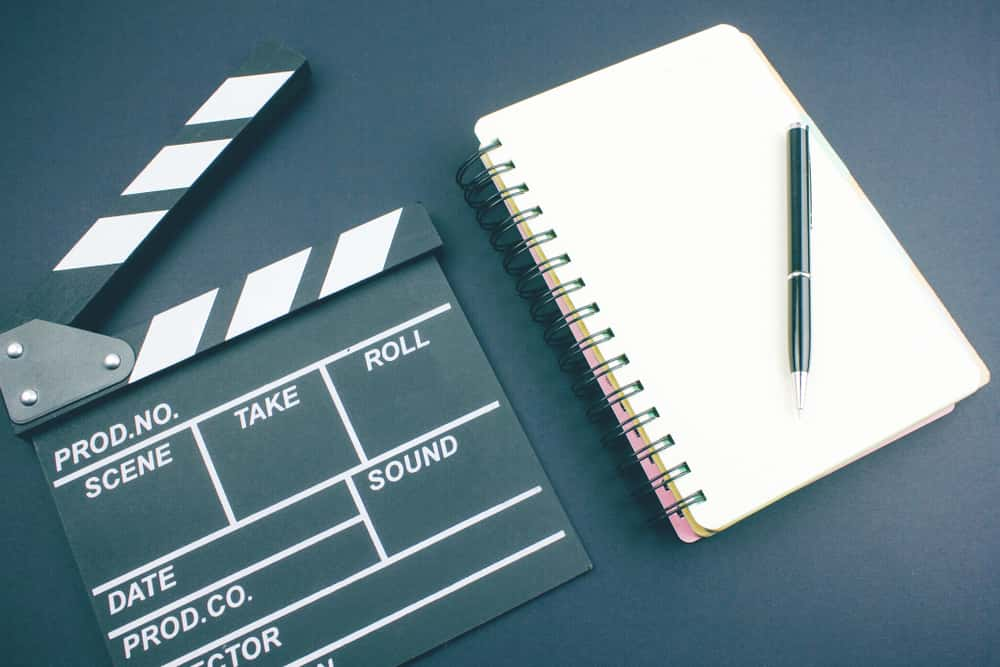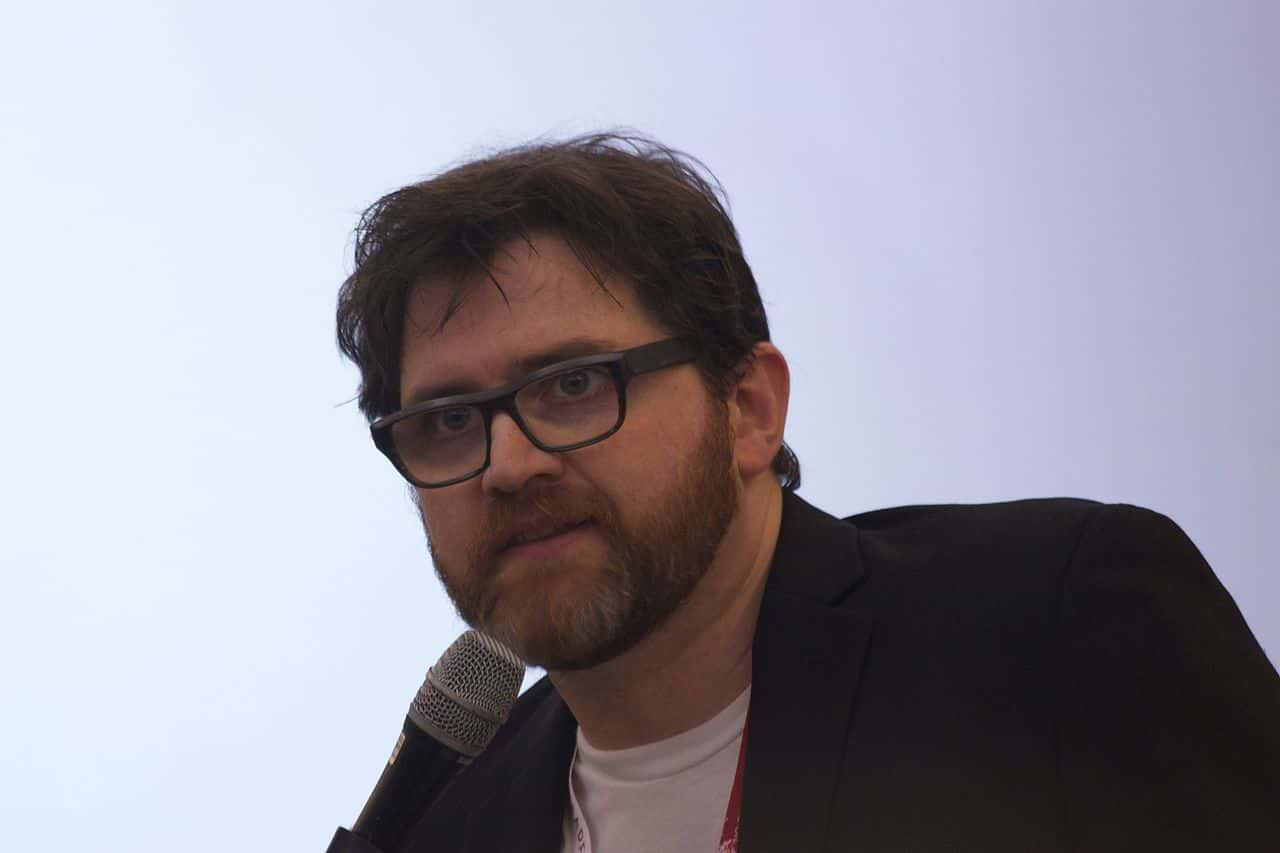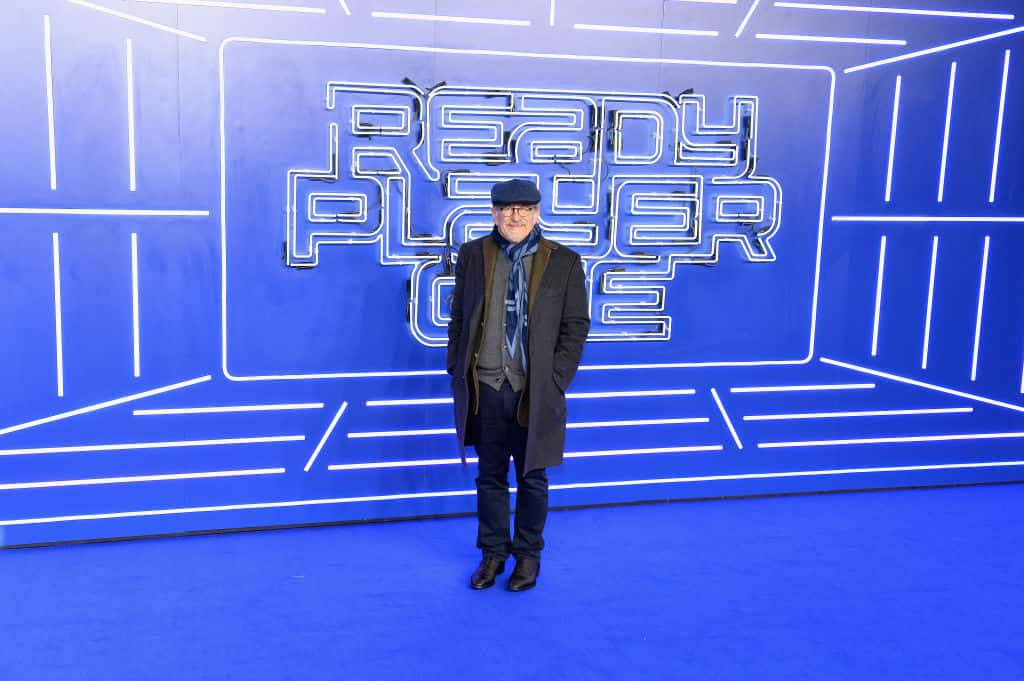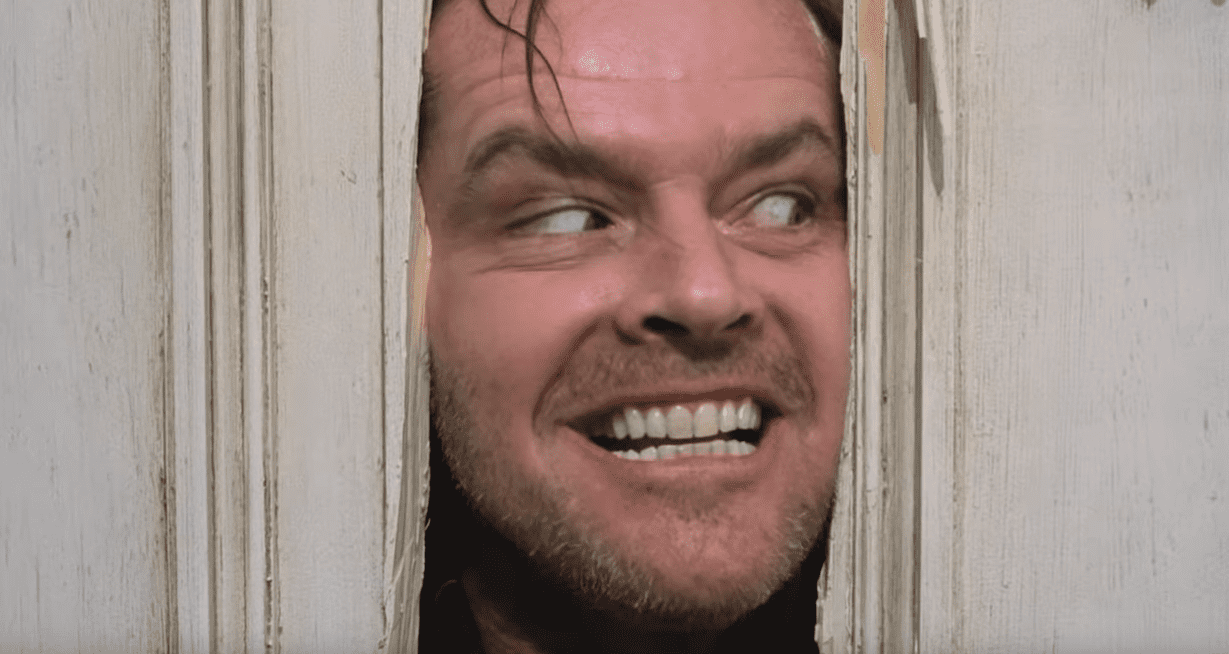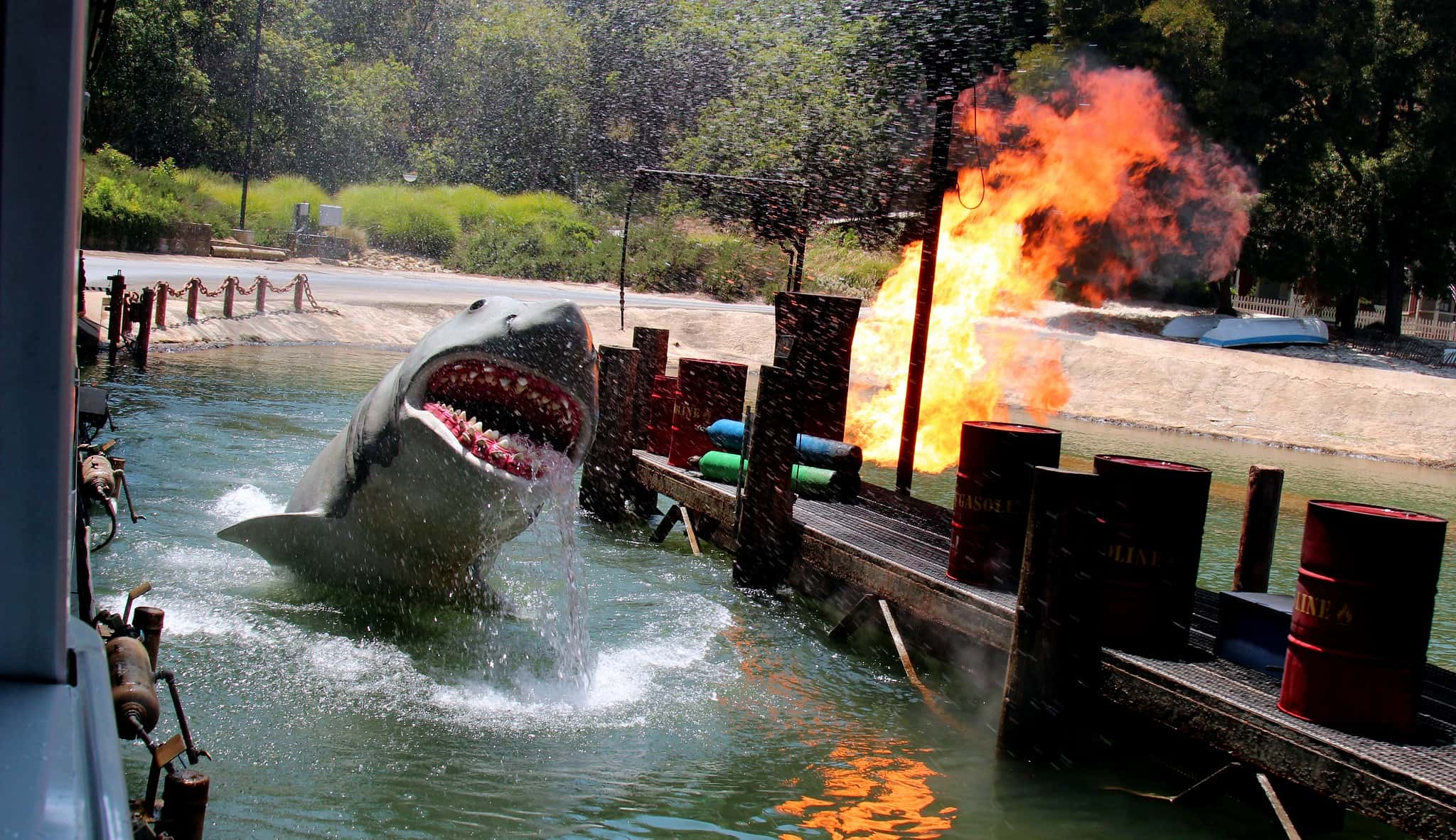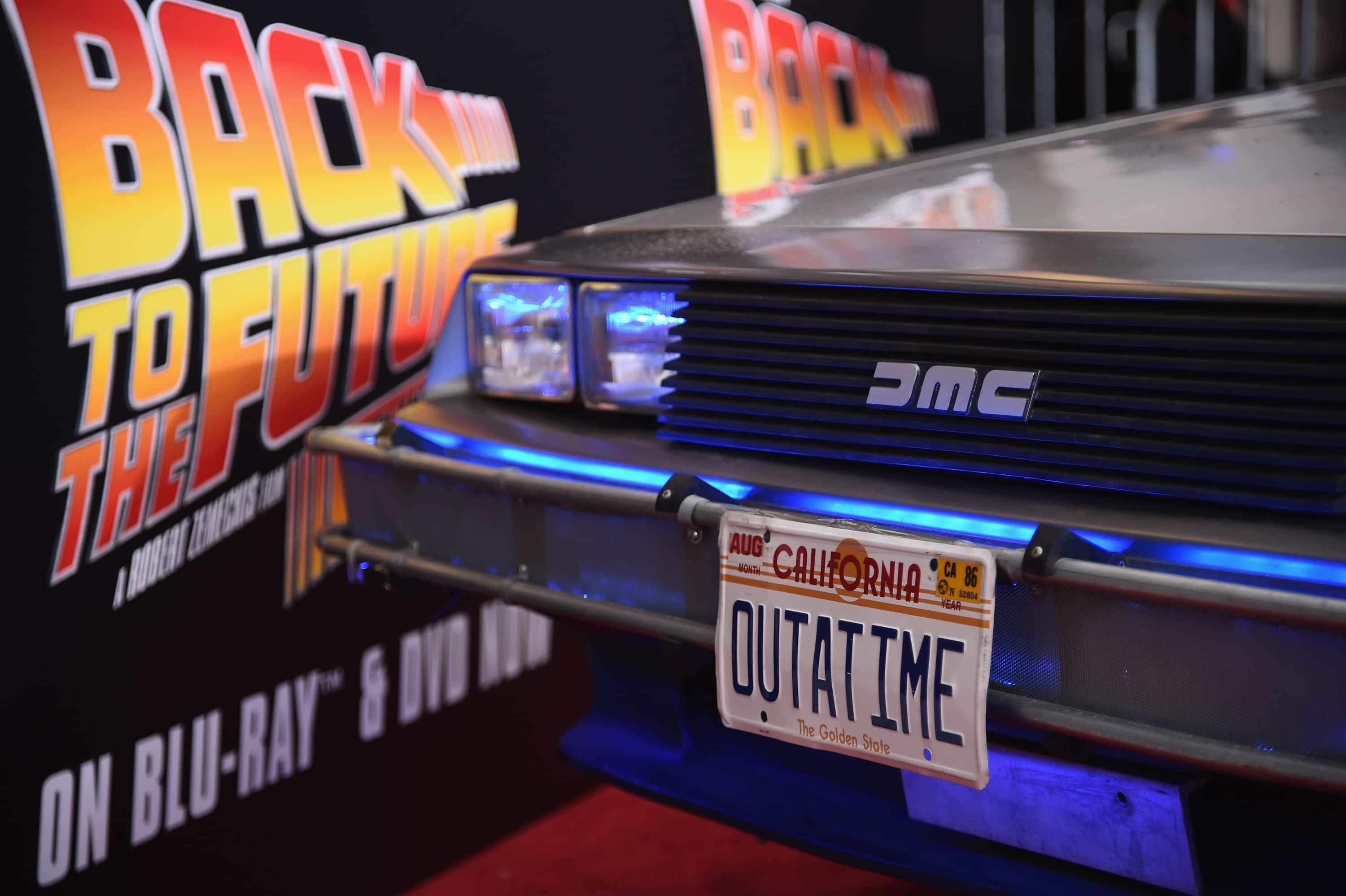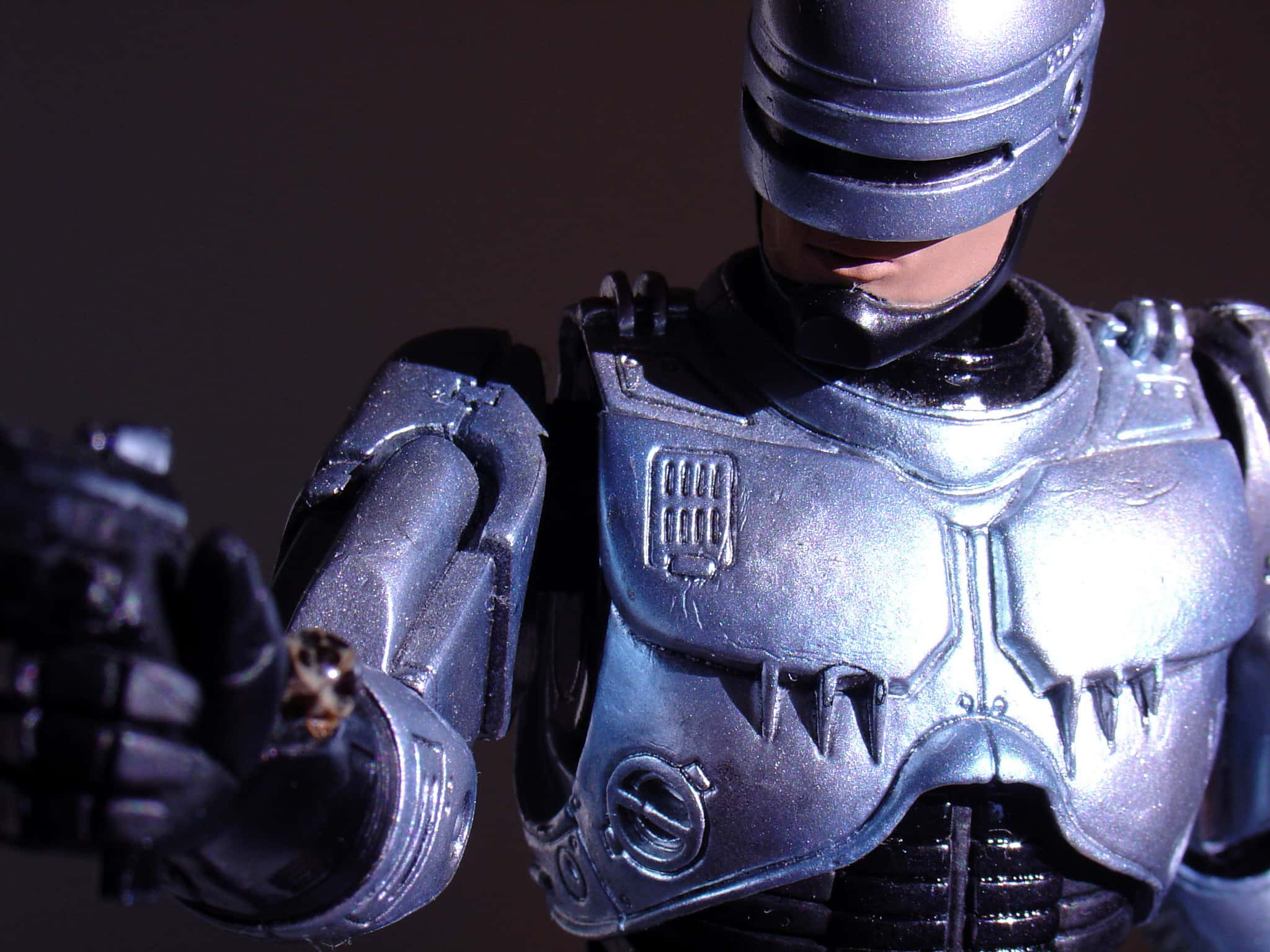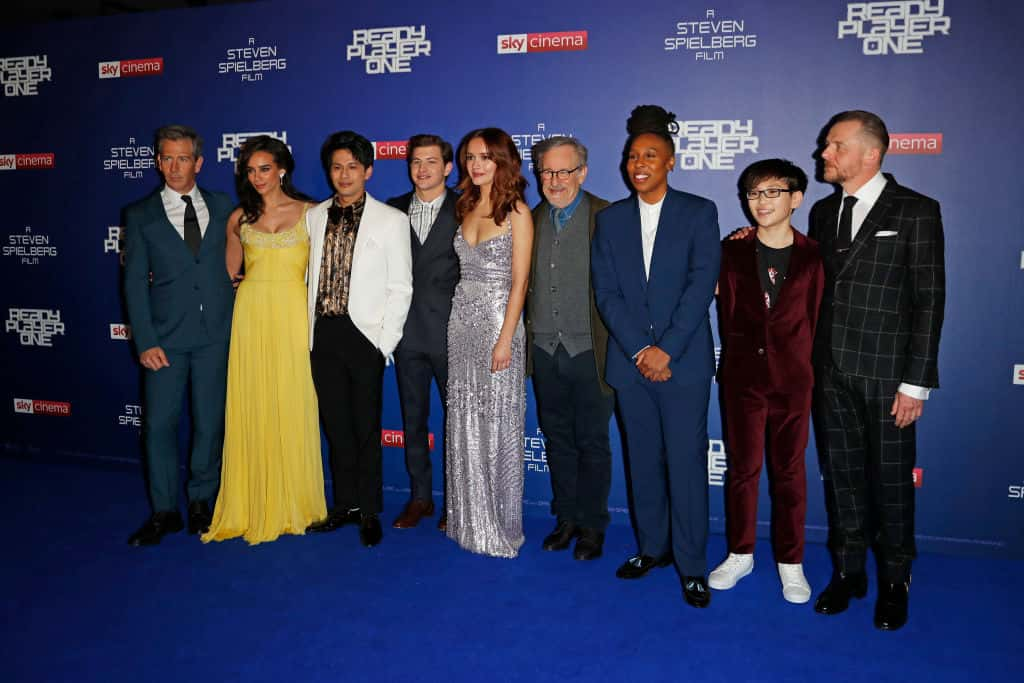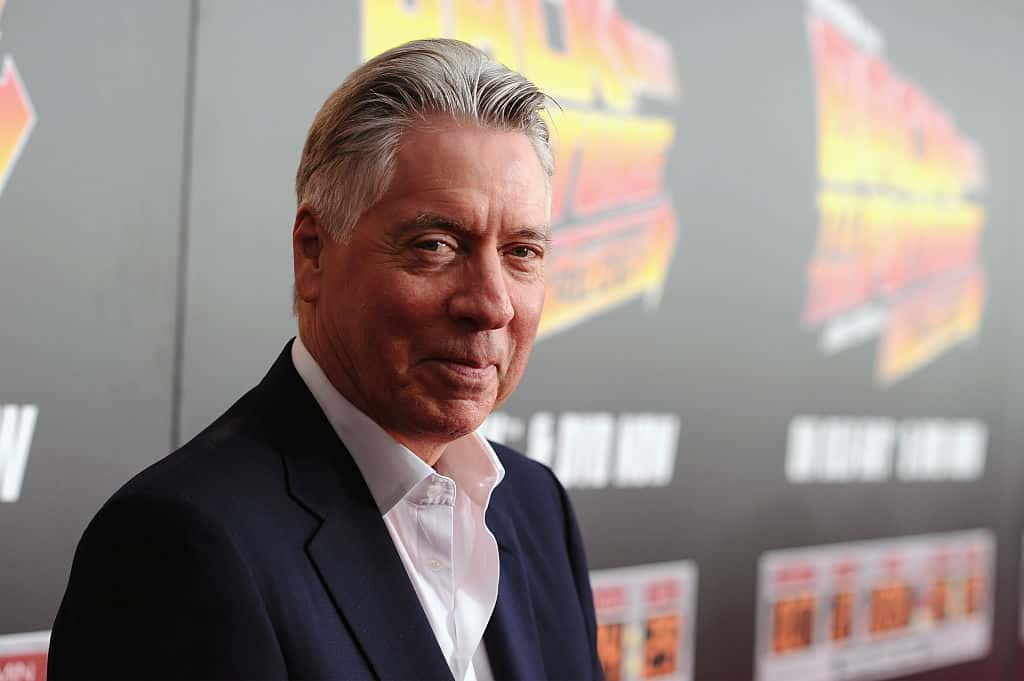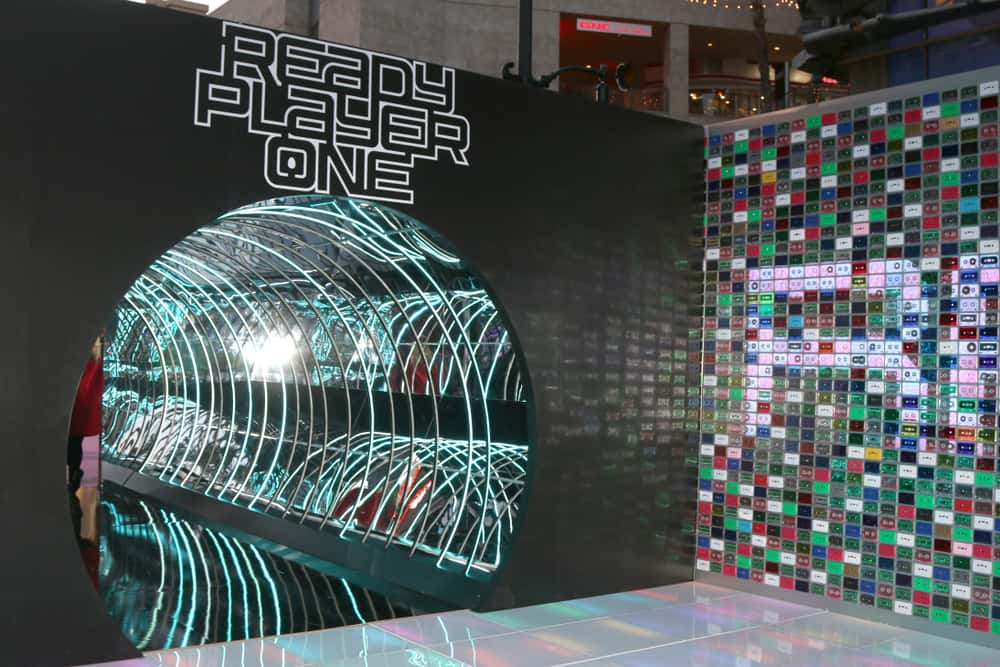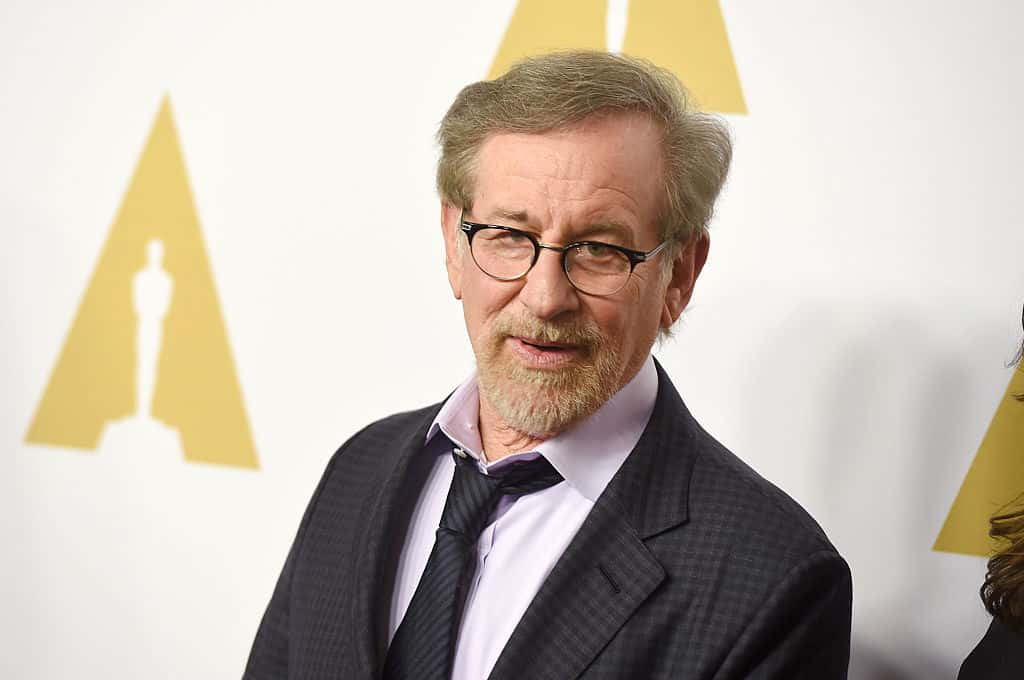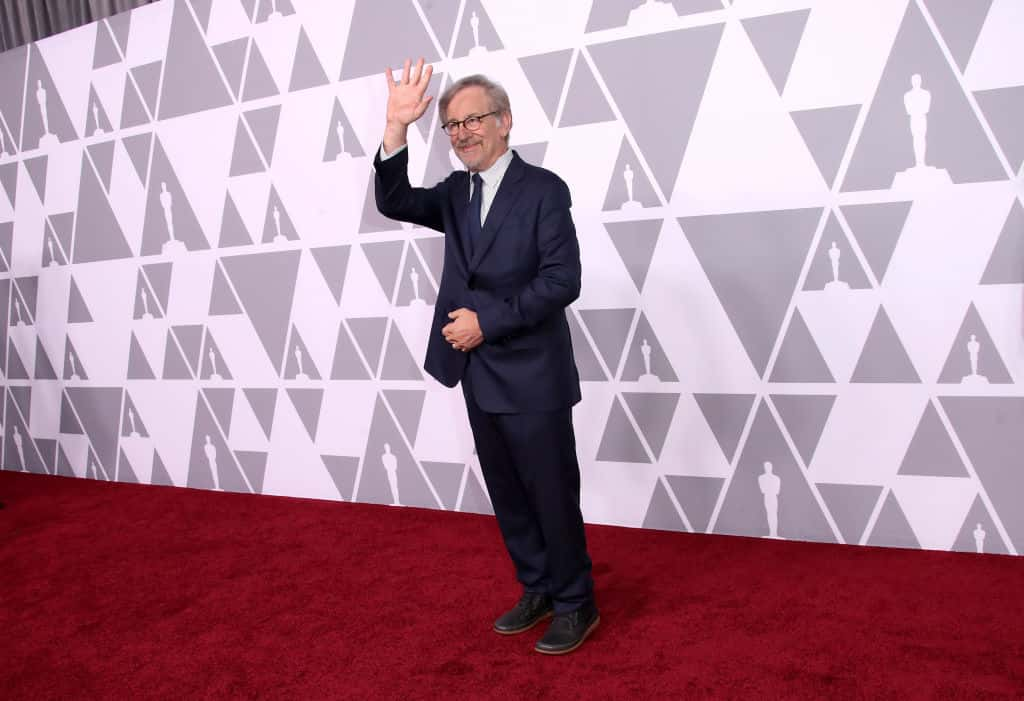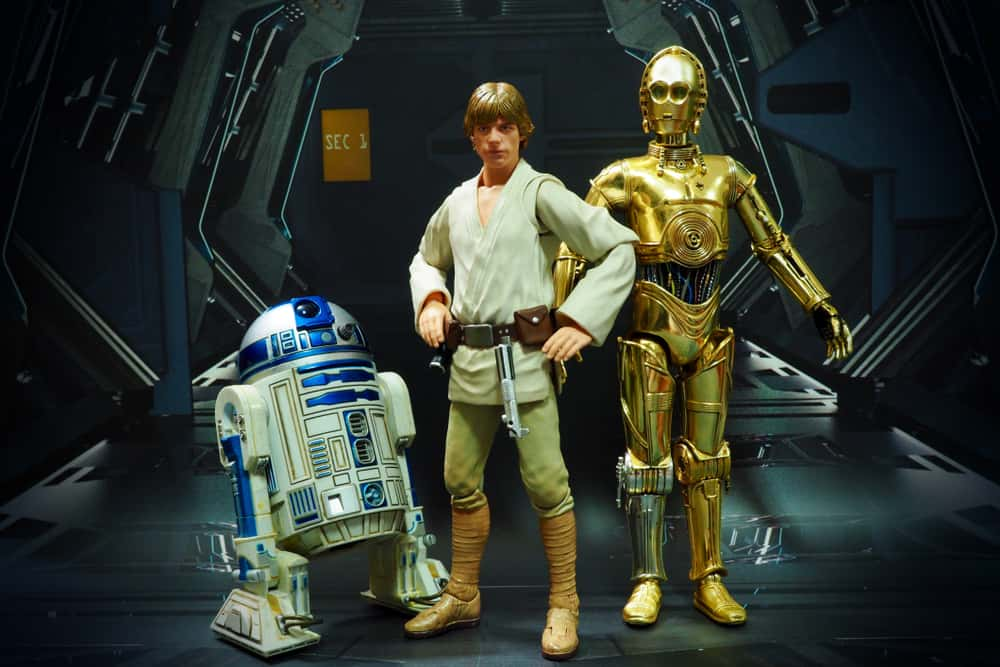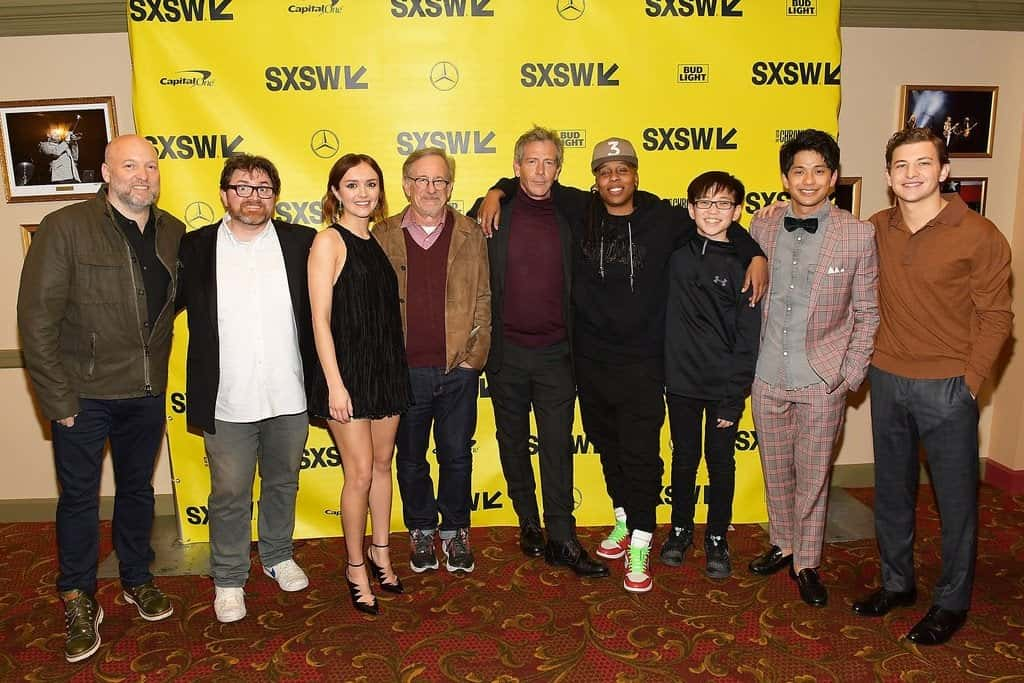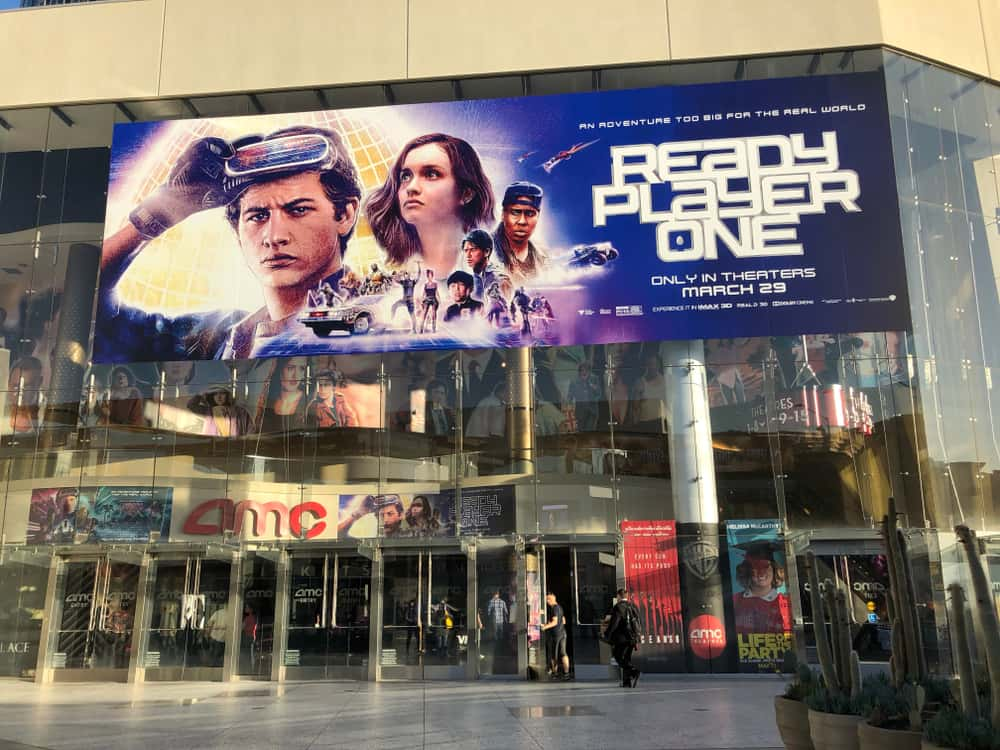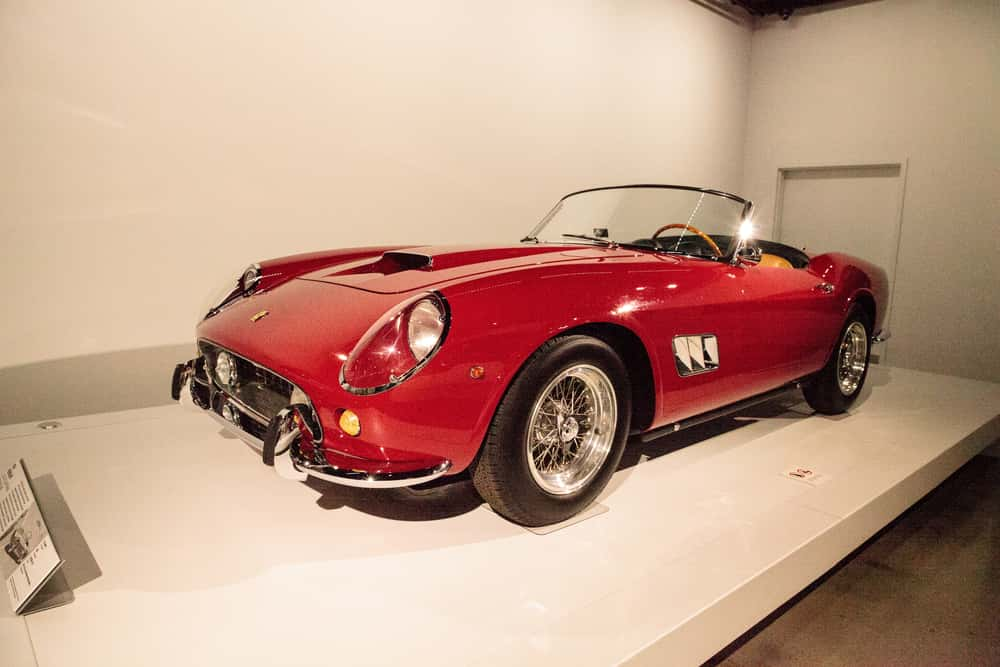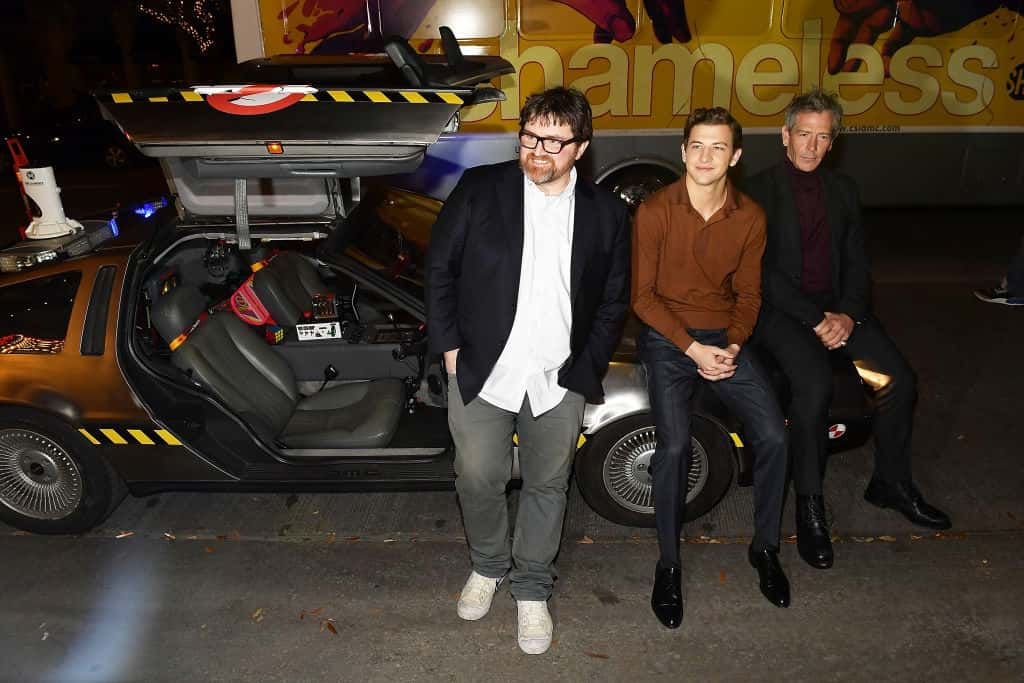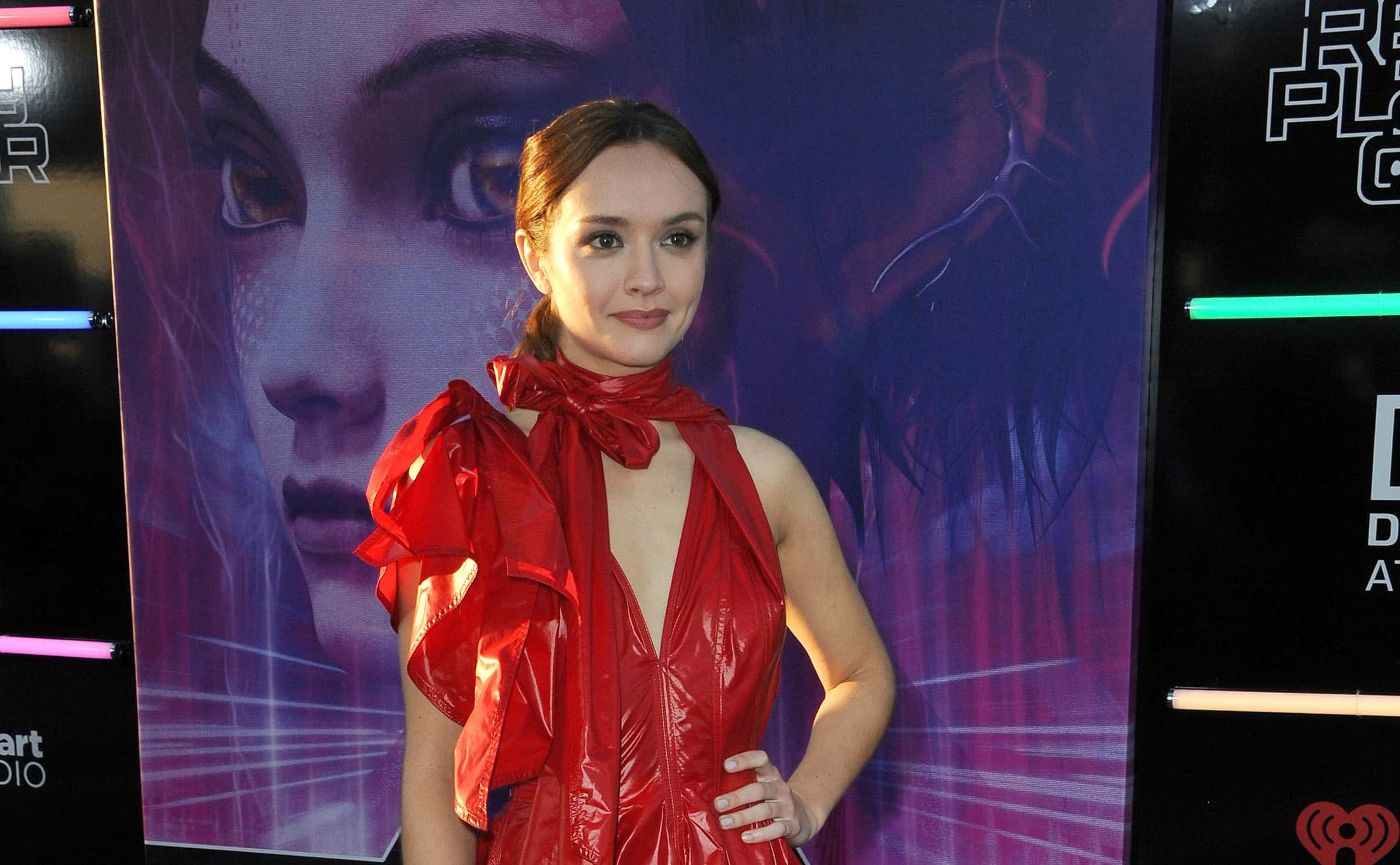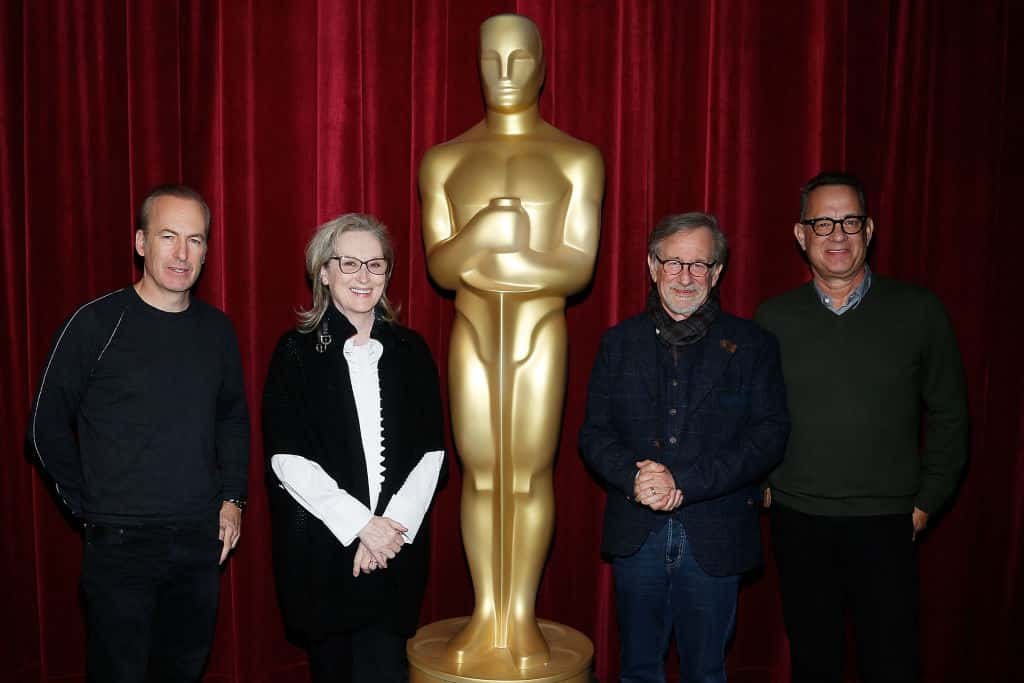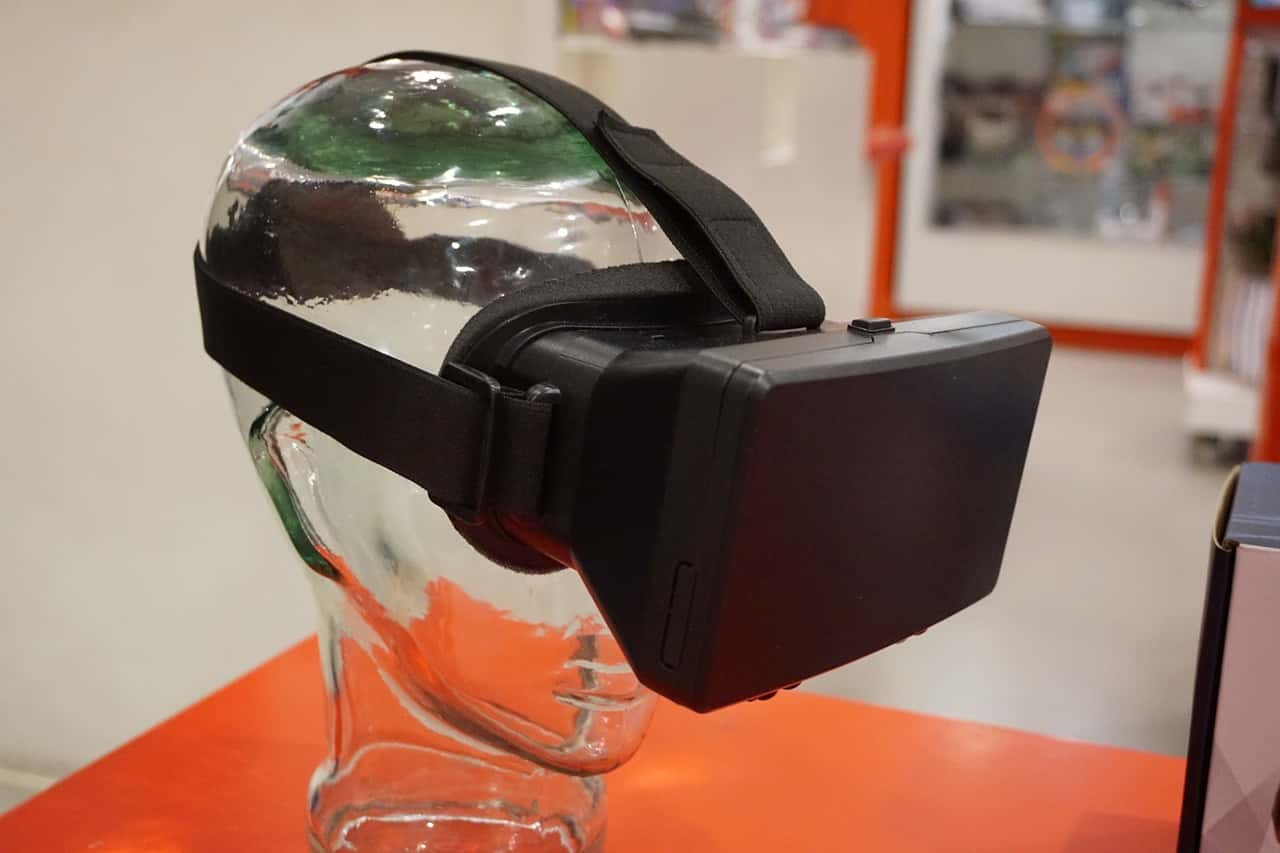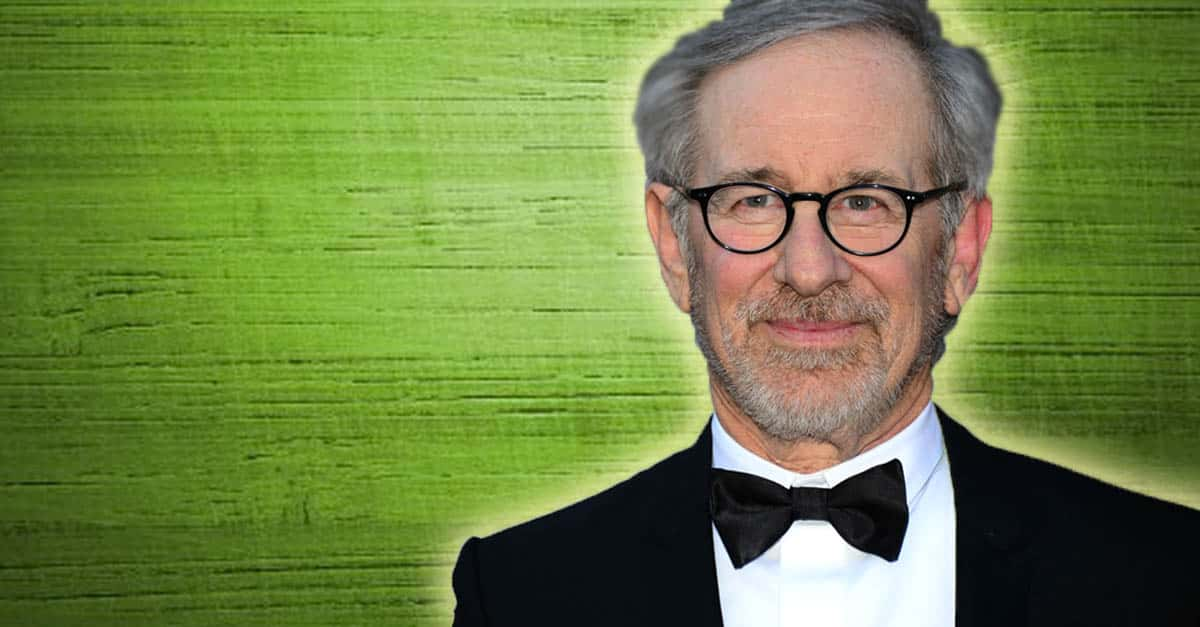“In 2045 there’s nowhere left to go, nowhere, except The Oasis.”—Wade Watts
Even before it came out, the buzz surrounding Ready Player One was deafening, and for good reason. It’s a science fiction movie like nothing we've ever seen before, directed by the legendary Steven Spielberg. The book it’s based on, by Ernest Cline, has a rabid fan base who have anxiously awaited this big screen adaptation. If you’re not already familiar, the story takes place in a bleak dystopian version of the near future and follows a teenaged outcast named Wade Watts. Wade escapes his gloomy reality by logging into an online multiplayer virtual reality game called The Oasis. When its creator—who was a child of the ’80s—dies, he offers players the chance to compete in an Easter Egg hunt within the Oasis, with his fortune as the prize. With that said, beware—spoilers ahead! Here are 42 action-packed facts about Ready Player One.
Ready Player One Facts
42. Living in the Real World
At an LA press junket for the film, Spielberg explained what he found so appealing about the book and why he wanted to turn it into a movie. He said that he was fascinated by the book’s themes about choosing to exist in fantasy or in reality, and he saw it as something of a cautionary tale.
Factinate Video of the Day
41. A Trip Down Memory Lane
The title Ready Player One is the message that Oasis players see when they log on. The phrase is a reference to ‘80s coin-operated arcade games—it was the message that flashed when the game started.
40. An Improved Version
A Verge review of the film suggests that Spielberg’s treatment of the book improves on the original source material because he doesn’t “talk audiences through it” or “spell out the references.” Instead, he cuts right to the action, and ensures that both those who get the ‘80s references and those who don’t have a chance to enjoy the movie.
 Wikimedia Commons, Dick Thomas Johnson
Wikimedia Commons, Dick Thomas Johnson
39.The Impossible Movie
When screenwriter Zak Penn read an advance copy of the book in 2011, he was positive that it could never get made into a movie. He said the book “appealed on a visceral level,” but he thought the scope was too huge and that it would cost well over $250 million to make. Wonder what made him change his tune?
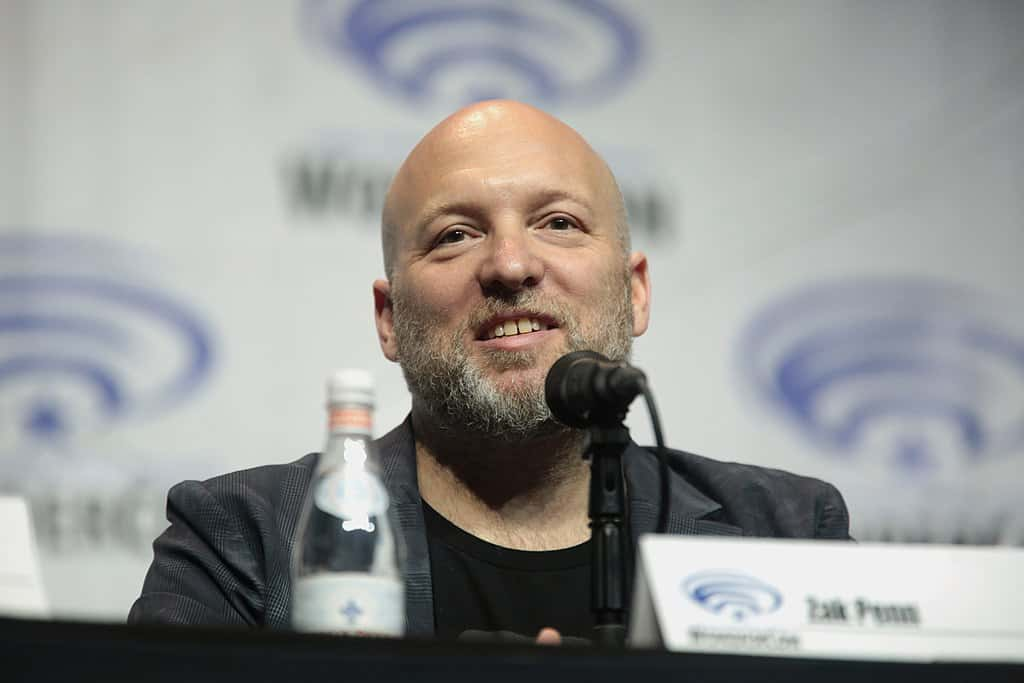 Wikimedia Commons, Gage Skidmore
Wikimedia Commons, Gage Skidmore
38. A Change of Heart
In 2014, after making a documentary that featured author Ernest Cline as the subject, Penn realized that he had already laid the groundwork for creating a “Valentine” to ‘80s pop culture. He wrote a draft in six weeks, and his screenplay convinced Steven Spielberg to sign on as director. From that point on, Penn spent three years consulting on the film, lending his vision to the challenging source material.
37. A Little Too Faithful
Ready Player One was optioned for film before the book even released, but the studio quickly realized they had a problem. Author Ernest Cline was initially given the job of adapting his book, but he was too faithful to the book and they needed to find a way to streamline it. Who could blame him?
36. Back to His Roots
For director Steven Spielberg, filming Ready Player One made him feel like a kid making movies again, and took him back to the kind of movies he made in the 1980s. However, unlike his ‘80s movies, this movie gave him a different kind of movie making experience. In an interview with ABC News, Spielberg explained that he was making this movie “not from behind the camera but …in the audience, with the audience as my collaborators, telling a story for the audience.” Say audience again, Steven.
35. Trade-Off
The virtual reality car chase in the film was shot digitally rather than live with stunts. While Spielberg conceded that it was definitely safer than a real car chase, shooting it digitally was probably more expensive. Nobody said movie-making was cheap!
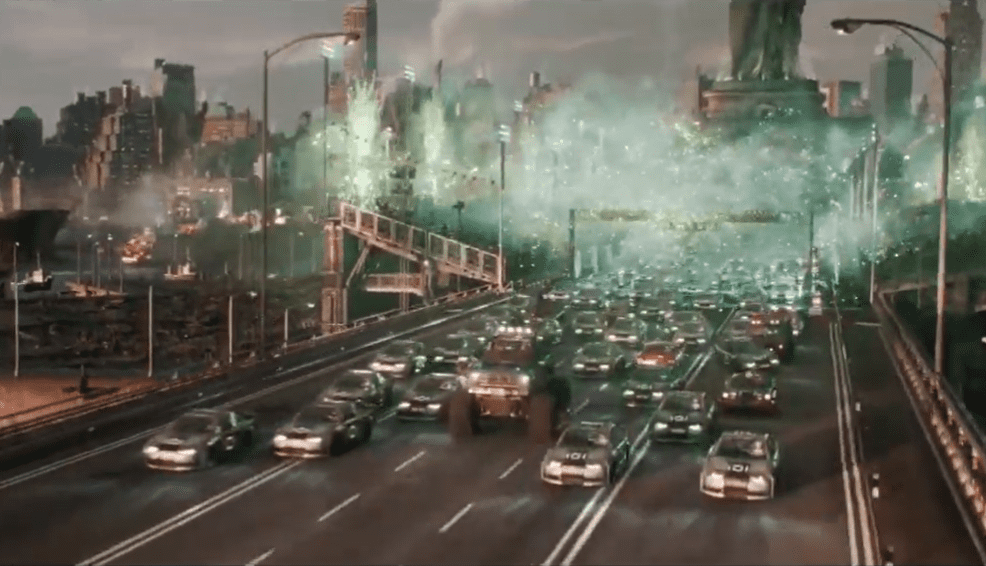 Ready Player One (2018), Warner Bros. Pictures
Ready Player One (2018), Warner Bros. Pictures
34. Film Within a Film
When Penn and Cline were adapting Ready Player One, they were searching for the perfect film to use for the film-within-a-film sequence. Initially, they wanted to use Blade Runner, but the studio refused, since Blade Runner 2049 was about to be released. Instead, they settled on Stanley Kubrick’s adaptation of Stephen King’s classic horror novel The Shining. They didn’t really think that Spielberg would go for the idea, but fortunately for them, he agreed to do it.

History's most fascinating stories and darkest secrets, delivered to your inbox daily.
33. Very Meta
Filming the “Shining” sequence in the movie was an extremely difficult undertaking. Cline and Penn spent weeks figuring out how it should look, and felt like it should have the “meta quality” of an author who dislikes the movie adaptation of his book—of course, King famously hated Kubrick’s adaptation of The Shining. Beyond that, the writers also wanted to signal that nostalgia shouldn’t create sacred cows of our favorite pieces of culture.
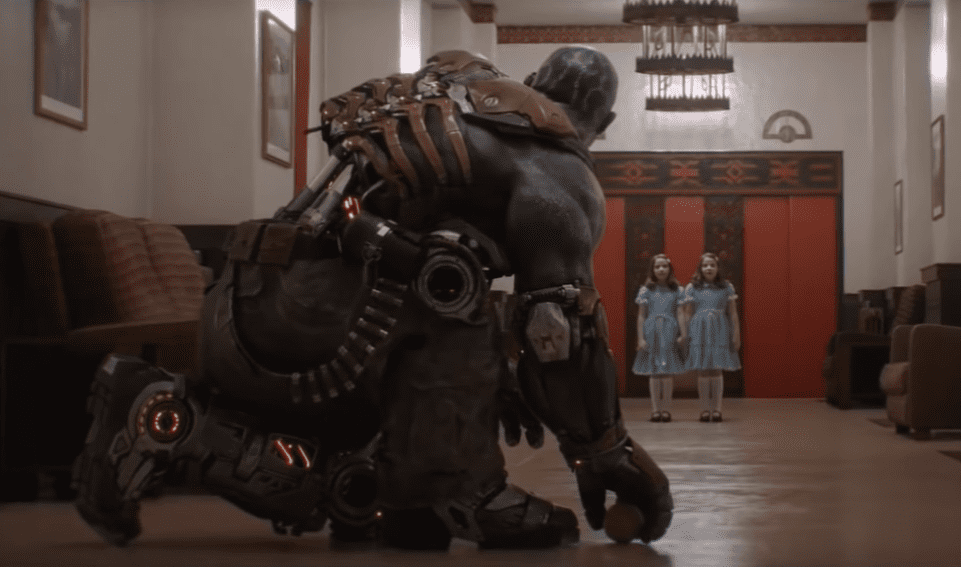 Ready Player One (2018), Warner Bros. Pictures
Ready Player One (2018), Warner Bros. Pictures
32. Climbing with Batman
Ready Player One contains over 100 “Easter Eggs” or inside jokes, one of the cleverest being an appearance by the Caped Crusader. OASIS offers users the chance to spend time with their favorite superheroes, and one can climb Everest with Batman. Staying true to the ‘80s theme, Batman is depicted wearing the same costume that was worn by Michael Keaton in Tim Burton’s Batman.
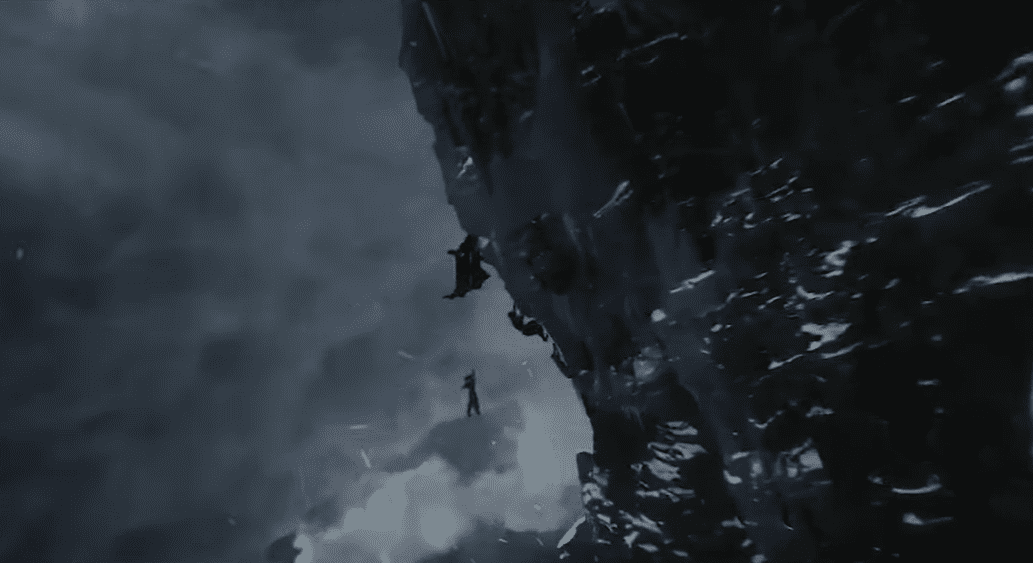 Ready Player One (2018), Warner Bros. Pictures
Ready Player One (2018), Warner Bros. Pictures
31. Third Most Difficult
Steven Spielberg told author Ernest Cline that Ready Player One was the third most difficult movie he has made out of his dozens of films. Topping the list is Jaws, due to all of the technical issues Spielberg faced while filming. It’s followed by Saving Private Ryan, where Spielberg had to recreate D-Day. Ready Player One was challenging because of the number of scenes shot using VR technology, and how difficult it was to find the balance between the real-world and OASIS storylines.
30. Stellar Shortlist
Before signing Spielberg to direct, Warner Brothers compiled a crème-de-la-crème list of possible directors. Among the directors on the shortlist were Christopher Nolan, Robert Zemeckis, Peter Jackson and Matthew Vaughn. Zemeckis in particular had been considered to be a frontrunner, as Back to the Future was heavily referenced in the book. Gives new meaning to the phrase “Where we’re going, we don’t need roads!”
29. Finding the Start
One of the changes made from the book to the movie was to start the movie at a later point in the story. In the book, Wade finds the first of three challenges on his own, but in the movie, the first challenge had already been located years ago by a different person. According to Penn, once they made that shift, writing the rest of the script became easier, because they were actively participating in the challenge instead of reading about it.
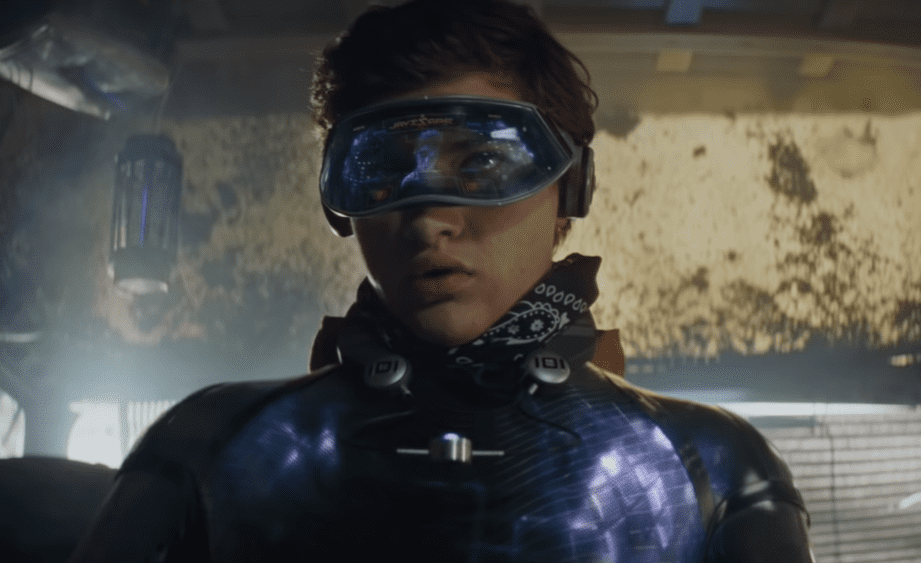 Ready Player One (2018), Warner Bros. Pictures
Ready Player One (2018), Warner Bros. Pictures
28.Embracing RoboCop
RoboCop was a popular film in the 1980s that explored the blurred lines between technology and humans. In Ready Player One, one OASIS user enters the world as RoboCop. He’s also seen later on in the film in a Battle Royale. Did they have to follow the Prime Directives?
27. Courting Willy Wonka
Around 2015, rumours started flying that Spielberg was trying to convince Gene Wilder to come out of retirement to appear in Ready Player One and take on the role of the world’s creator, James Halliday. Wilder turned down the role, but to the delight of fans, the intro bell to the song “Pure Imagination” could be heard in the trailer released at the 2017 Comic-Con.
26. Rare Departure
Composer John Williams and Steven Spielberg have partnered on nearly all of Spielberg’s movies, but due to a scheduling conflict, Williams had to bow out of composing the score for Ready Player One, and Alan Silvestri, known for films such as Back to the Future and The Polar Express, composed the score instead.
 Wikimedia Commons, Alec McNayr
Wikimedia Commons, Alec McNayr
25. No Head-to-Head
Ready Player One was originally scheduled to open on December 15, 2017, but had it done so, it would have gone head-to-head with Star Wars: the Last Jedi, which was a battle they didn’t want to fight. They chose the March 30, 2018, date to avoid both the Winter Olympics and the World Cup, and to coincide with Easter weekend. Probably not many Ready Player One fans who had big plans to watch the Olympics, but I guess it makes sense. Either way, with few big releases scheduled for April, it gives the film some unchallenged box-office time, which is also a plus.
24. Evoking Wonder
When composing the score, Alan Silvestri worked closely with Spielberg to achieve the right level of balance between nostalgia and originality. While the score does not contain any direct musical nods to ‘80s films, Silvestri’s goal was to evoke the tone of wonder, optimism and adventure that was present in ‘80s films.
23. Massive Maze
Only eagle-eyed viewers will catch the Easter Egg that’s cleverly hidden in the movie’s logo. The logo itself is one large maze, and the ultimate prize—the Easter Egg from the movie—is hidden within the O in the logo.
22. Put it Back!
When Spielberg agreed to direct the film, he had a few thoughts on the script. One of them was adding the Distracted Globe zero-gravity dance club from the book, which hadn’t made it into the adaptation. Penn had cut the scene, assuming that it would be too expensive to film, but Spielberg obviously didn’t think so.
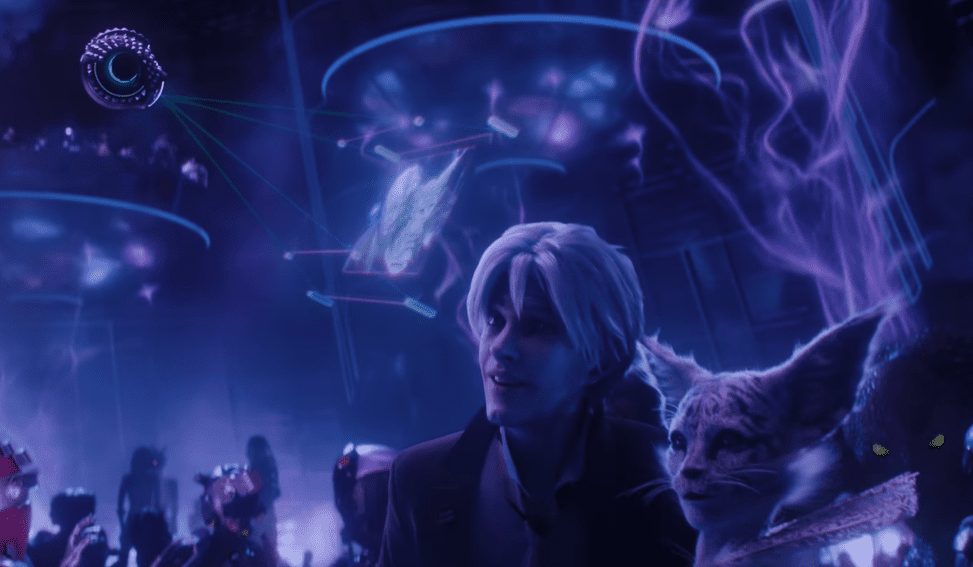 Ready Player One (2018), Warner Bros. Pictures
Ready Player One (2018), Warner Bros. Pictures
21. Can We Use This?
One of the big hurdles that Ready Player One had to overcome was securing the rights to all of the characters and franchises that were mentioned in the book. While Warner Brothers already owned the rights to properties such as Iron Giant and Batman, permission to use movies such as Back to the Future and Teenage Mutant Ninja Turtles required some negotiating. Luckily, Steven Spielberg was able to use his influence to make it easier. Would you tell Spielberg no?
20. Staying True
There’s nothing worse than anticipating a movie version of your favorite book and then finding out that the film scarcely resembles the source material. According to producer Donald De Line, one of their biggest obstacles in adapting the book to film was making sure that it stayed true to the spirit of the book. As he explained to Gizmodo: “So if you love the book, all the great touchstones from the book are there. And it’s very true to the integrity of that. But then also there are new set pieces that will blow your mind and give you a great new experience.” Everyone wins!
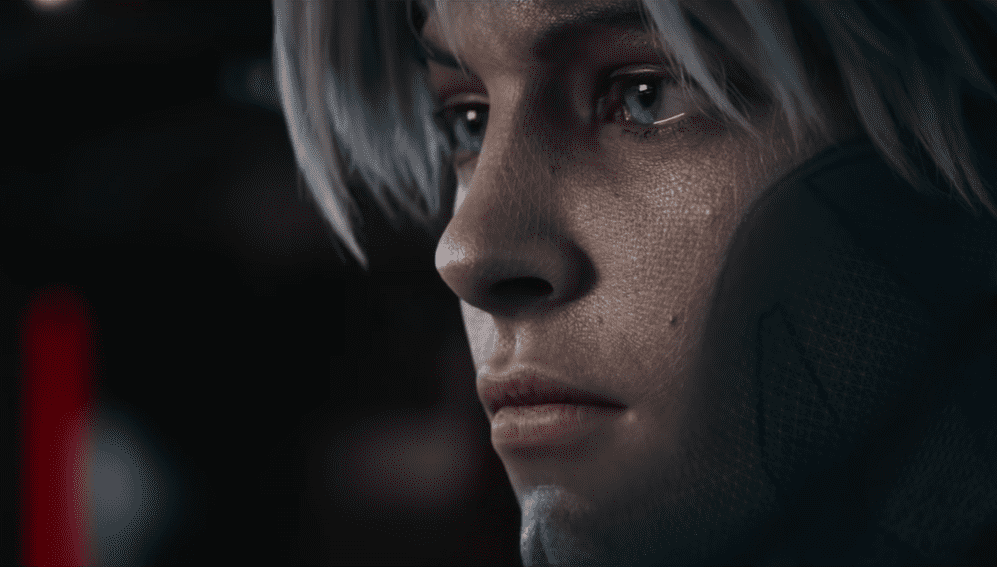 Ready Player One (2018), Warner Bros. Pictures
Ready Player One (2018), Warner Bros. Pictures
19. Poised to Contend
Though sci-fi adventure movies typically get overlooked during awards season for categories like Best Picture, there is one category in which it could potentially contend. Thanks to the use of CGI for the creation of the VR world of OASIS, it could certainly score a nomination in the Best Visual Effects category. If it does, it will be the 10th Spielberg movie to contend in this category, and the first since 1993’s Jurassic Park. Of the nine nominations so far, Spielberg has won four times, with Raiders of the Lost Ark, E.T.: The Extra-Terrestrial, Indiana Jones and the Temple of Doom, and, of course, Jurassic Park.
18. Minimal Force
In early interviews for the film, Spielberg said a few things that seemed to suggest to fans that the lack of Star Wars Easter Eggs in the film was the result of Disney refusing to give up rights for it. But as he later explained to Fandago, rights were not a factor in the way Star Wars was presented in the film. He said that even though Star Wars began in the ‘80s—or actually, the ‘70s if you want to be technical—since it was still ongoing and part of the “contemporary world,” he didn’t want to use the major icons from the films. Instead, he says they chose a couple of smaller icons, and Disney was not a problem.
17. Classic Horror
Fans of ‘80s horror movies will love the references to two classic franchises. When the movie shifts perspective to Wade’s allies Sho and Daito, they meet Jason Voorhees from the Friday the 13th films in a deathmatch battle on the planet DOOM—presumably named in reference to the video game. Elsewhere on DOOM, Wade’s friend Aech is busy blasting Nightmare on Elm Street’s Freddy Krueger, in all of his terrifying glory.
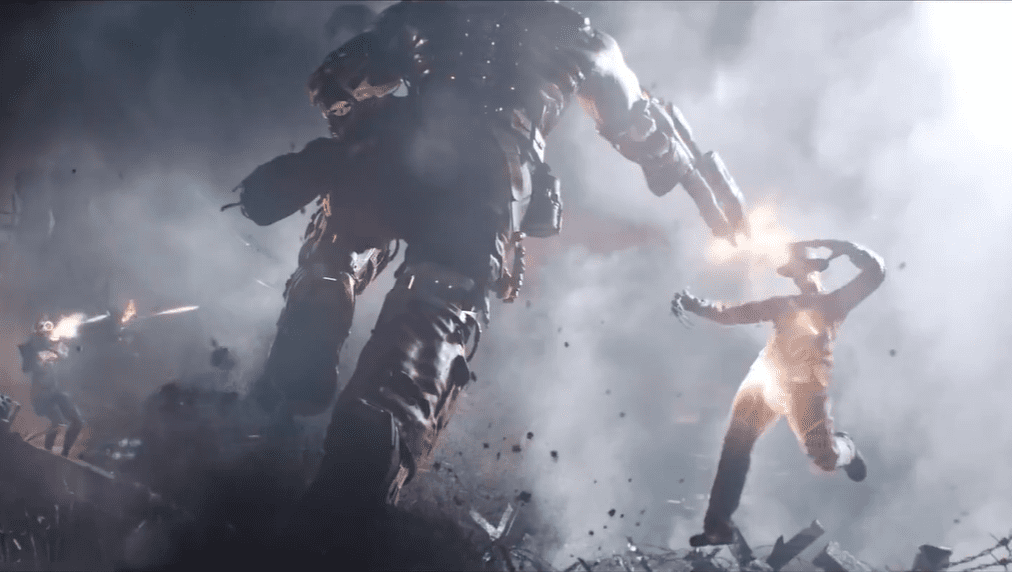 Ready Player One (2018), Warner Bros. Pictures
Ready Player One (2018), Warner Bros. Pictures
16. It Stands for Something
The VR world OASIS is an acronym which stands for Ontologically Anthropocentric Sensory Immersive Simulation. Unfortunately for viewers, this is not specifically mentioned in the film, so the only way to know this is by reading the book.
 Ready Player One (2018), Warner Bros. Pictures
Ready Player One (2018), Warner Bros. Pictures
15. Global Success
Ready Player One reached the $300 million mark globally within just one week of its release. The movie is the biggest release ever for Warner Brothers in China, earning more than any superhero movie with the exception of Avengers: Age of Ultron and Captain America: Civil War. It's currently the second largest Hollywood release of 2018 so far.
14. VR Willy Wonka
In a Forbes magazine review of the film, the author of the review called it a “modern version of Charlie and the Chocolate Factory.” While they aren’t literally alike—especially since Ready Player One is based on a book written for adults with violent content—he makes the case that they are more similar than you’d think. Both Wade and Charlie live in poverty and are awarded numerous riches in the end. Both Wade and Charlie have to pass a test of worthiness, and both feature rather strange and unique old hermits who are using the contests as a means of preventing competitors from taking over. Wonka and Halliday even have some physical similarities, which is ironic since Spielberg originally wanted Gene Wilder—Willy Wonka himself—to play the role. In both films, the directors successfully allow viewers to get lost in an ultimate fantasy of “pure imagination,” while simultaneously reminding them that qualities like decency and compassion are more important than winning.
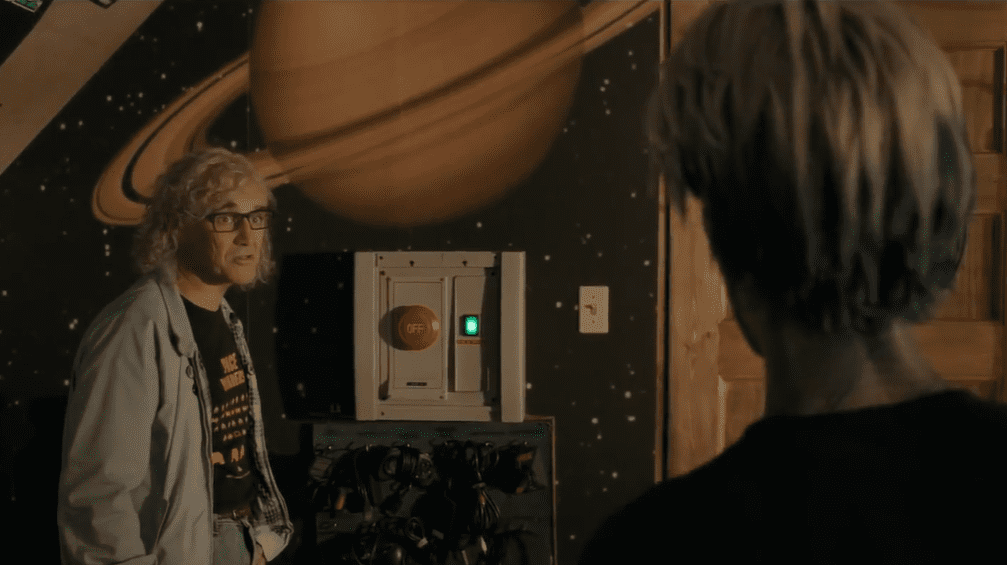 Ready Player One (2018), Warner Bros. Pictures
Ready Player One (2018), Warner Bros. Pictures
13. A Character’s Motivation
Actress/producer/screenwriter Lena Waithe made her big screen debut in Ready Player One, where she plays Helen/Aech—Wade’s best friend in OASIS. When asked about her thoughts on what motivates Helen to enter the OASIS, her answer was simple: escape. Waithe believes that what Helen wants is to be seen as one of the guys, and to be treated “equally, fairly, and with respect.”
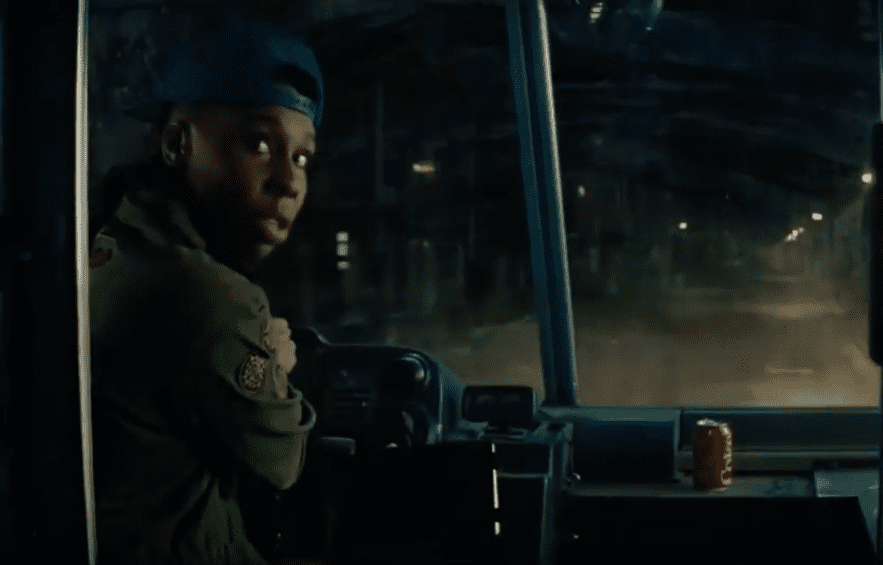 Ready Player One (2018), Warner Bros. Pictures
Ready Player One (2018), Warner Bros. Pictures
12. Remembering Robby
To call Robby Street a superfan of Cline’s book would be a gross understatement. According to his mother Josslyn, he read the book 26 times, and it was his favorite novel. Eight months prior to the movie’s opening, Robbie and his dad were killed in a car wreck. To honor Robbie, his mother, surviving brother, and 50 people, including some of his family, friends, and classmates, all went to their local cinema to see the movie on opening night. Of the movie, his mother said “He was just elated. He was so excited—it might have been the best day of his life.”
11. Inside Aech’s Garage
In OASIS, Aech runs a garage that rebuilds and customizes digital vehicles. Inside the garage are lots of pop cultural nods, including the Winnebago Chieftain 33 from Spaceballs, with amplified wings. Also in the garage is the famous Ferrari 250 GT from Ferris Bueller’s Day Off. In the real world, fewer than 100 were made, so even in the VR world of OASIS, having one is quite a coup.
10. No Leverage
With the adaptation of his book to the screen, Cline faced a number of unique challenges. To begin with, the book rights and movie rights were sold within 48 hours of each other, and having never written a book before, he couldn’t point to having a bestseller in order to maintain the book’s integrity. Cline admits that pressure made him feel like he was being forced further and further away from the book, and while he knew that there would have to be changes, he still wanted to stay true to the story.
9. From Worry to Excitement
If not for Steven Spielberg, Cline admits that he doesn’t believe that the movie would ever have gotten made. Once Cline met with Spielberg, he says he went from “worried to excited.” He knew that Spielberg had a history with book-to-movie adaptations and appreciated the collaboration that they shared right into pre-production. Now that the film is done, he’s “really happy with how it turned out.” That’s gotta be a relief!
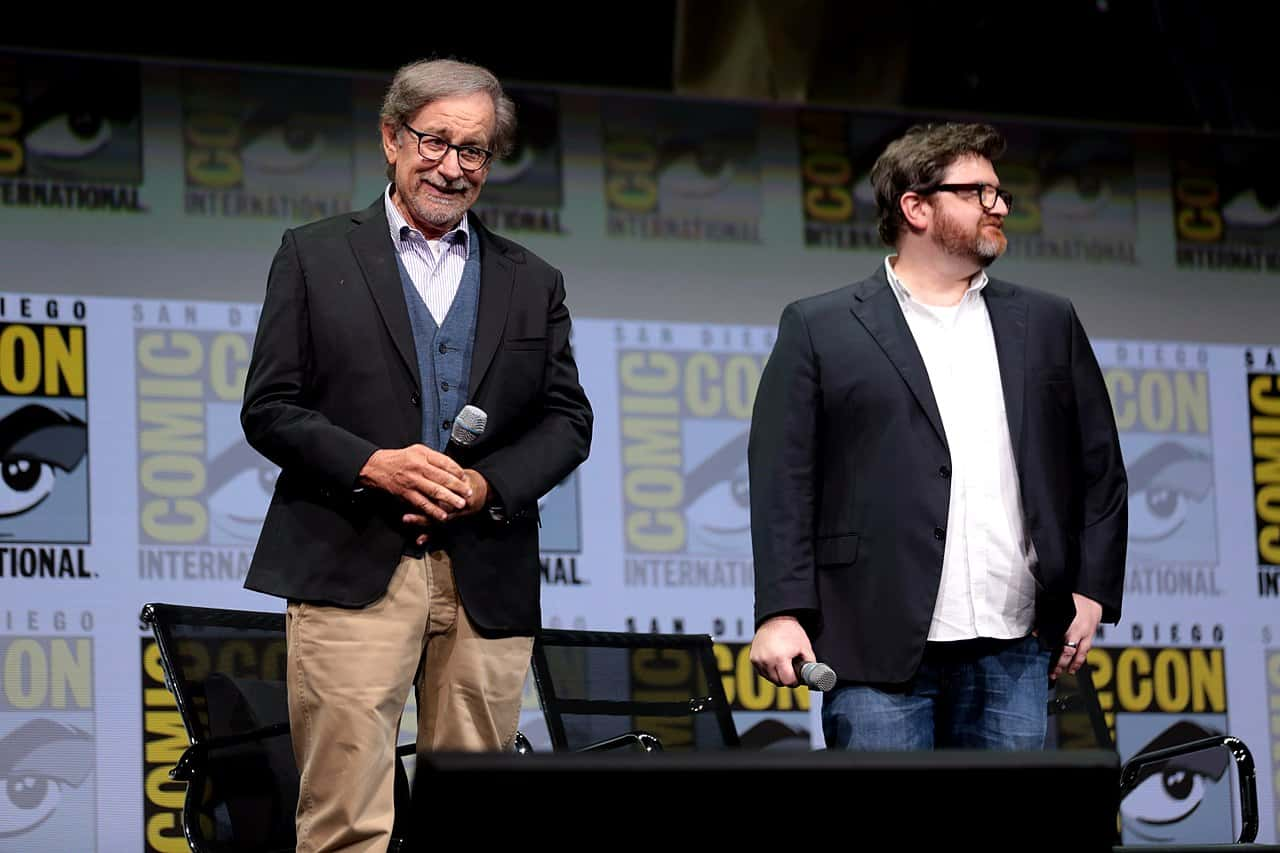 Wikimedia Commons, Gage Skidmore
Wikimedia Commons, Gage Skidmore
8. Getting the Part
British actress Olivia Cooke, who plays Art3mis, is known for her roles in Bates Motel and Me, Earl and the Dying Girl, but that didn’t mean she didn’t have to work for the role. She told Den of Geek that she got a call saying that Spielberg wanted her to do some chemistry reads, first in Los Angeles, and then in New York with various cast members. Shortly after, she got a call to read the script, and make sure she liked it. The rest, as they say, is history.
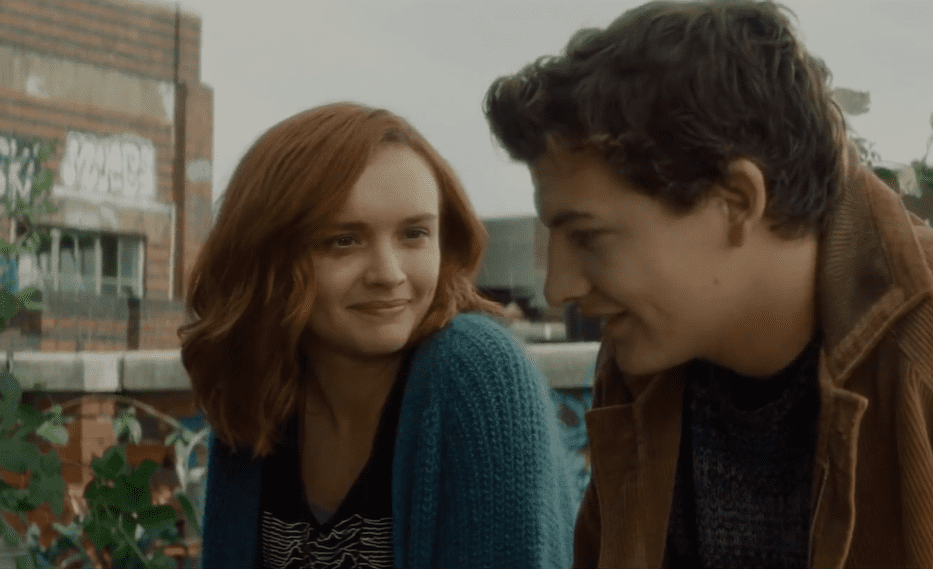 Ready Player One (2018), Warner Bros. Pictures
Ready Player One (2018), Warner Bros. Pictures
7. Boning up on the Book
Cooke admits that she didn’t know anything about the book prior to accepting the role in the movie. She said once she got the role, she decided to read the book and was surprised to discover how popular it was. Then she suddenly started seeing people reading the book at coffee shops and everywhere she went.
6. Spaced Man
British comedian Simon Pegg appears in Ready Player One as Ogden Morrow. Pegg also co-wrote and starred in another “nerd” favorite, the Three Flavours Cornetto film trilogy, which includes Shaun of the Dead, Hot Fuzz, and The World’s End. But before all that, Pegg created, wrote, and starred in the British cult TV series Spaced, which is, of course, referenced in the book version of Ready Player One.
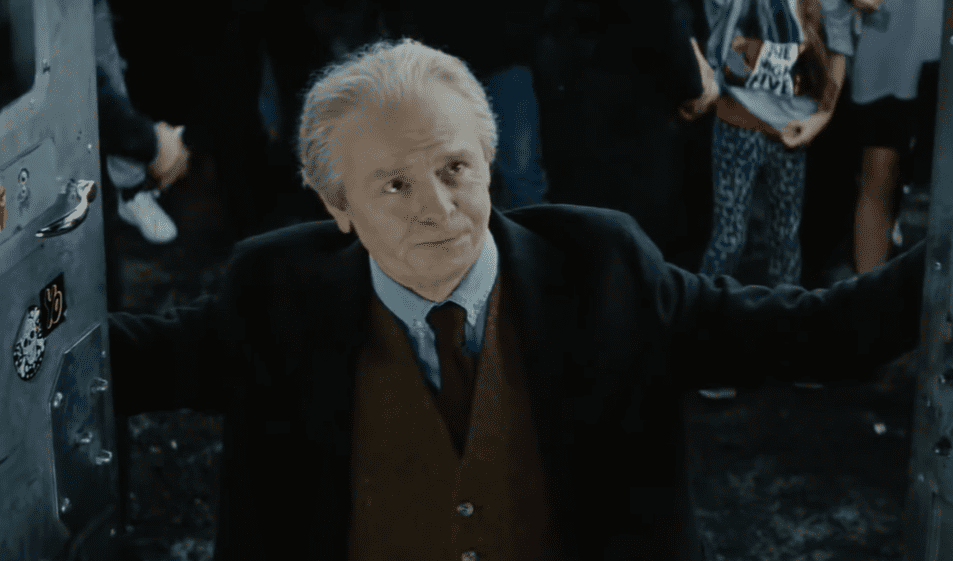 Ready Player One (2018), Warner Bros. Pictures
Ready Player One (2018), Warner Bros. Pictures
5. An Abstract Set
The experience of filming the movie was quite unique and completely fitting to its source material. The entire cast had to wear Virtual Reality Oculus glasses from Google too see the set that is seen in the movie. When they took them off, they saw a 4,000 square foot white, empty space called Volume. According to Spielberg, it was the only way for the cast to know where they were.
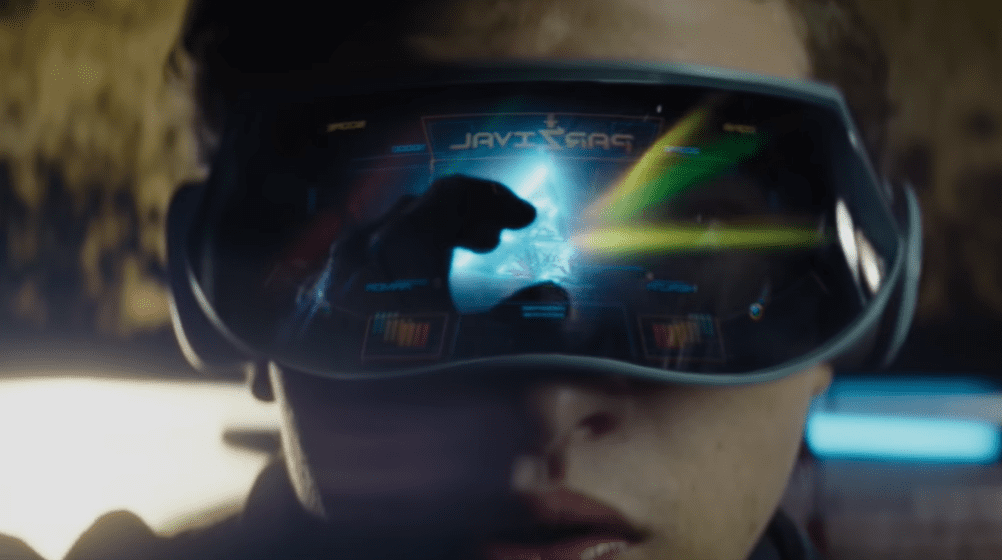 Ready Player One (2018), Warner Bros. Pictures
Ready Player One (2018), Warner Bros. Pictures
4. That’s One Way to Take a Break
While waiting for Industrial Light & Magic to complete the 1,500 digital effect shots for the film, Steven Spielberg took a break by making and releasing an entire film. That’s right, he made the Oscar-nominated The Post during his downtime.
3. Built for the Screen
There’s many differences between the book and the film, but the biggest difference probably has to do with the copper key. In the film, the key is pursued during the race sequence, and everyone always knows where it is. In the book, it was lost for years, and it’s only when Parzival stumbles into a Dungeons & Dragons campaign and beats a demon in the arcade game Joust that he obtains the key and meets Art3mis.
 Ready Player One (2018), Warner Bros. Pictures
Ready Player One (2018), Warner Bros. Pictures
2. Avoiding Himself
The book Ready Player One made several references to Steven Spielberg’s movies—but Spielberg didn't want his adaptation to be a practice in self-flattery, so unfortunately this movie about 1980s pop culture is conspicuously devoid of any references to Spielberg films. However there was one movie reference that he apparently almost kept in. In a recent interview, he admitted that he briefly considered having Wade use a “Grail diary” like the one kept by Sean Connery’s character in the Indiana Jones and the Last Crusade. In Cline’s book, Wade uses the diary to keep track of his information pertaining to the contest, but Spielberg ultimately decided to keep it out. In our humble opinion, “He chose…poorly.” Get it?
1. Advancing Technology
When the book was released in 2011, Virtual Reality had not yet fully taken off. In an interview with The Independent, author Ernest Cline speculated that the movie version will take VR further than even his book did. The book is now part of a package for new employees at Oculus to get them excited about the possibilities of VR. According to Cline, the movie is the first realistic portrayal of the positives and negatives of VR, and he thinks it will result in a rapid adoption of the technology. He also thinks that the movie will influence a new generation to either try the technology or to work with it, including people who never would have before.
Sources: 1, 2, 3, 4, 5, 6, 7, 8, 9, 10, 11, 12, 13, 14, 15, 16, 17, 18, 19, 20, 21, 22, 23, 24, 25, 26, 27, 28, 29, 30, 31, 32

